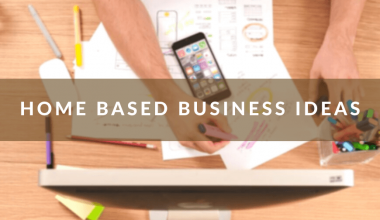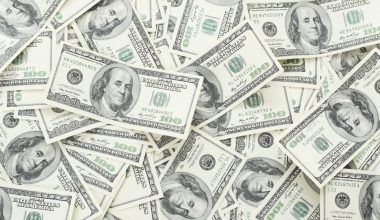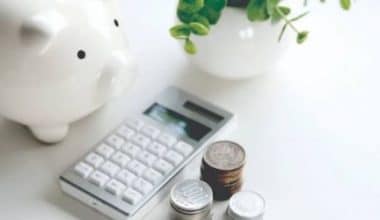Personal budgeting seems like a tedious and restrictive task. It is illuminating and empowering. The majority of people have no idea where their money goes each month. When it expires, they appear astonished. However, it should never come as a surprise. It is necessary for the amount of money coming in to exceed the amount left. If not, you’ll eventually run out of money or incur debt. Being unable to do something essential to you because you unintentionally spent money on something else that wasn’t as important to you is especially aggravating. In this article, you’ll learn about personal budgeting software, categories, a personal budgeting template, and the app for personal budgeting.
Making a personal budget entails being thoughtful and proactive about your spending. Creating a budget involves planning so there are no surprises and your money goes where you want it to. You can better understand the reality of your spending by keeping track of it. This is crucial for a couple in particular. Conflict over money is the largest source of discord in marriages. Couples frequently assume that the other person is the one whose spending is out of control. Monitoring your spending and identifying areas where you are spending more than you anticipated might be eye-opening. A personal budget is a financial plan that divides up future income between debt payments, savings, and expenses. Making a workable strategy and sticking with it are both necessary for personal budgeting.
What is Personal Budgeting?
The process of making a personal budget involves planning how you will spend your money. Budget refers to this plan for spending money. Making this spending plan enables you to estimate your financial situation in advance and decide whether you will have enough money to accomplish your goals.
By balancing your spending and income, you can use planning and forecasting to better manage your finances.
Simply balancing your expenses and income constitutes budgeting. You will have a problem if they are out of balance and you spend more than you earn. Many people are unaware that they spend more than they make and gradually accumulate debt each year.
You can use this planning approach to prioritize your spending and concentrate your funds on the things that are most essential to you if you don’t have enough money to do everything you want to.
Budgeting ensures that you will always have enough money for the things you need and the things that are important to you by allowing you to plan out how you will spend your money. Maintaining a budget or spending plan will also help you avoid debt or, if you already have it, work your way out of it.
Personal Budgeting Software
You may learn the fundamentals of personal budgeting through software and apps, improve your money management skills, and even find solutions to achieve your long-term financial objectives. Your existing financial requirements will determine the best personal budgeting software for you. You can manage your investment portfolio while using some personal budgeting software, while other programs can assist with budgeting and cost tracking. Of course, your personal finance software budget is also important.
#1. Xero
Xero is feature-rich and user-friendly financial software. You can utilize this platform to have a better understanding of your cash flow and accounts payable. The software can be used to monitor and timely pay invoices. You receive a ton of tools for managing expenses, which might be useful for submitting and paying out expense claims.
Additionally, you receive precise accounting reports that can be used to monitor your accounts. The software performs admirably as a robust, user-friendly invoicing program.
Features
- Direct bank connection to Xero Track Bills and easy integration with payment gateway banks are compared.
Verdict
With Xero, you can manage all kinds of financial processes that are essential to running a business. For small firms, accountants, and bookkeepers, the answer is perfect.
#2. Oracle – Netsuite
Perhaps one of the more well-known options on this list is Oracle Netsuite. It is an extremely potent cloud-based financial management tool. You can have total visibility over your accounts thanks to the software’s built-in accounting intelligence. You can use secure and dependable methods to collect payments from clients with the aid of the software.
In addition, Oracle Netsuite may be trusted to track and manage the book value and depreciation value of your business’s fixed assets. Additionally, you receive pre-built reports that are very customizable and effective in keeping you informed about your current financial situation.
Features
- Forecasting and Budgeting
- Human Resource Management
- Management of Customer Relationships
- Individualized reporting
- Integrated Revenue Management
Verdict
Oracle Netsuite is without a doubt one of the most user-friendly and powerful cloud-based financial management software solutions available. The software gives you complete visibility over both your consumers and your integrated finances.
#3. Sage Intacct
You may get a functional, cloud-based financial management system with Sage Intacct that is easy to use. You may use this tool to make your accounts payable and receivable workflows more efficient. The software does an excellent job of simplifying otherwise complicated billing procedures, which is crucial for receiving payment more quickly.
The visual dashboard of Sage Intacct is arguably its best feature. The dashboard is simple to use and provides you with current, useful insights. With the aid of the software’s dimensional and predictive analytics, you have total visibility.
Features
- There are more than 200 pre-built visual dashboard templates available.
- Automate your revenue and billing operations.
- Real-time cash management requires visibility.
- Order Control
- deals and approvals that are structured
Verdict
It will be difficult to locate software that is as outstanding as Sage Intacct if you’re seeking a best-in-class cloud solution that is finance-focused. It stands out because of its configurable dashboard and enhanced automation capabilities.
#4. BankTree
BankTree is another piece of user-friendly personal finance software that has three key features. It is a tool made to simplify the management of investments, accounts, and financial reporting. This program can be used to monitor your bank, checking, and savings accounts once it has been activated.
You are provided with the instruments you need to manage your complete investment portfolio by the software as well. Additionally, interactive charts are provided, which might be useful when writing a report.
Features
- Obtain live transactions by connecting to the bank.
- Define and anticipate continuing budget
- receipts from a mobile device
- Real-time tracking of your investment portfolio
Verdict
Anyone who wants more control over their finances should use BankTree, which is the software we think is best for this. This is accomplished by the software assisting users in keeping track of their bank accounts and investment portfolios and getting a general idea of their expenses through interactive charts.
#5. Moneydance
A personal finance app called Moneydance made my list due to its feature-rich design and user-friendliness. Moneydance shines as a finance app in two specific areas. First of all, it makes the entire online banking process more efficient. From hundreds of banking institutions, the software can automatically extract transactions and deliver payments online.
Second, it quickly produces graphical reports that are simple to understand. The graph type, date range, and any additional customization options are yours. The software will generate a report that accurately reflects your current income and expenses.
Features
- Online Banking Automatically
- Make visual reports of your income and expenses.
- Create payment reminders or alerts.
- Set up recurring payments or one-time payments in advance.
- There is a mobile application available.
Verdict
Moneydance is an application made to make a variety of chores relating to personal money simple. The software is perfect if you want to automate budgeting, account management, internet banking, and bill payment activities.
Personal Budgeting Categories
Aside from actually sticking to your budget, one of the most difficult aspects of budgeting is coming up with one in the first place. The right categories must be included, which is a significant factor.
Some categories are necessary for most budgets, even though you can use some discretion and imagination when choosing your budget categories. Starting with these ten is an excellent idea.
#1. Housing
One of the most significant budget lines for everyone is housing. It not only appears in almost all budgets, but it’s frequently the most expensive budget area as well.
Your living situation will determine what items are included in your housing budget. Your housing expenses may only consist of rent and renters insurance if you currently rent a home or apartment. However, if you own a home, it most likely includes your mortgage payment in addition to other expenses like homeowners association dues, property taxes, and home maintenance.
#2. Transport
Another significant expense on most people’s budgets is transportation.
According to AAA, the average family spends more than $9,000 a year on a new car. Gas is part of transportation expenses. Gasoline may or may not be a significant expense in your budget, depending on how frequently you drive. Your yearly vehicle registration, as well as car maintenance, are additional transportation-related expenses.
#3. Utilities
Utilities will be a separate line item in your budget and will differ based on where you live. The three main types of utilities are electricity, gas, and water, but if you live in an apartment, your monthly rent may cover one or more of those costs. Additionally, it could involve recycling, sewage, or waste collection.
You might also classify your phone, internet, and television services as utilities. Most consumers make monthly payments for their internet and cell phone plans. A landline phone, cable, and streaming services are additional expenses.
#4. Food items
For American households, groceries are still another significant expense. Food expenditures range from $4,875 per year for families with incomes in the lowest 25% to $13,973 per year for families with incomes in the highest 25%, according to the U.S. Department of Agriculture. These numbers translate to monthly spending of between $406 and $1,164.
It’s wise to separate groceries from dining out when creating a budget. Everyone needs to eat. Although you must include basic groceries in your budget, going out to eat may be best labeled as personal spending.
#5. Insurance
Most of us pay monthly or yearly premiums for several different forms of insurance. While health insurance is frequently provided by an employer or paid for out of your paycheck, other types of insurance are likely to be regular monthly deductions from your bank account.
Auto insurance and either renters’ or homeowners’ insurance are the most typical examples. You might also have life insurance, disability insurance, long-term care insurance, and other insurance, depending on your circumstances.
#6. Medical
You almost certainly spend money on healthcare each year if you reside in the US. Additionally, healthcare may be a significant expense for you, depending on the quality of your insurance and your current state of health.
First, before insurance begins to pay for medical expenses, many people must pay substantial deductibles. There may be deductibles even for expenses that are covered by insurance.
#7. Daycare
You may pay for childcare services like a nanny or a daycare facility if you have kids who aren’t yet old enough to attend school.
In 2022, the average family anticipates spending over $10,000 on daycare, according to a Care.com poll. The good news is that after your child enrolls in kindergarten, your daycare expenses essentially vanish unless you elect to enroll your child in a private school.
Personal Budgeting Template
Individuals can track and manage their income, expenses, savings, and financial goals with the aid of a personal budgeting template. You can record your revenue sources and allocate funds for specific expenses using a spreadsheet or document that is often separated into numerous sections.
What a personal budgeting template might contain is broken down as follows:
#1. Earnings
List all of your sources of income, including your salary, investments, side jobs, and any other regular income you receive. Include each source’s volume and frequency.
#2. Expenses
Sort your spending according to many categories, such as housing, transportation, groceries, utilities, entertainment, debt repayment, medical care, etc. This makes it easier for you to understand where your money is going.
#3. Budgeted Amount
Calculate and assign the monthly budget you intend to spend on each area of expenses. Your financial goals or previous spending patterns may determine this.
#4. Actual Expenditures
Keep track of your actual spending by keeping track of how much you spend each month in each category. This enables you to spot any budgetary irregularities and make the necessary adjustments.
#5. Investments and Savings
Spend a percentage of your income on investments and savings. Emergency money, retirement contributions, and other long-term financial objectives fall under this category.
#6. Debts
If you have any unpaid debts, set up a category to keep track of your payments and measure how far you are from defaulting.
#7. Financial Objectives
Establish clear financial objectives, such as paying off a college loan, saving for a vacation, or purchasing a property. Include these objectives in your budget and set aside money for them.
#8. Analysis and Summary
Analyze your goals, savings, and income to get a general sense of your financial condition. Analyze your spending habits, pinpoint areas for development, and adapt as necessary.
#9. Examine and modify
Review your budget frequently, compare it to your actual expenditures, and make any required adjustments. This assists you in staying on course and making wise financial decisions.
#10. Documentation and Notes
You can make any additional notes here, keep track of any significant budget-related information, or record financial transactions.
A spreadsheet program like Microsoft Excel or Google Sheets can be used to construct a personal budgeting template, or you can get pre-made templates online or through budgeting apps. Pick a template that fits your requirements and tastes, then alter it to reflect your financial position.
Personal Budgeting App
You can utilize a variety of personal budgeting apps and resources to help organize your finances. To achieve all of your long-term financial goals, you must create a budget and use an app to hold yourself responsible for your spending and saving targets.
#1. Zeta
Zeta is a budgeting app that is targeted toward families and couples who want to keep track of their costs as a unit.
#2. Rocket Money
Rocket Money, a budgeting app that was formerly known as Truebill, has more than 3.4 million users worldwide and provides budgeting tools, bill-negotiating services, and other features.
#3. Mint
More than 30 million people use the budgeting app Mint to manage their finances and negotiate bills.
#4. PocketGuard
Over 500,000 users of the budgeting app PocketGuard can organize their bills and create budgets.
#5. EveryDollar
Ramsey Solutions created the budgeting app EveryDollar, which offers additional benefits to premium customers and allows users to establish fully personalized budgets and financial goals.
What are the Seven Types of Budgeting?
The strategic plan budget, cash budget, master budget, labor budget, capital budget, finance budget, and operating budget are the seven various types of budgeting that businesses utilize.
What is the Main Key to Budgeting?
Tracking your transactions is the key to budgeting success. This implies that you include all of your monthly expenses and income in your budget. By doing this, you may maintain your financial and personal accountability to yourself and your partner, if you’re married.
Summary
Personal budgeting makes it simpler to keep track of one’s income, expenses, savings, and goals. Individuals can divide their money among several spending areas, such as housing, transportation, groceries, and entertainment, by making a budget. They can also set aside money for investments, debt payments, and savings. Regular budget reviews enable modifications and guarantee that spending is in line with budgetary objectives. Actual spending tracking reveals areas that need improvement. A personal budgeting template offers a well-organized framework for handling money wisely, making well-informed decisions, and working toward financial stability and future goals.
Related Articles
- EXPENSE MANAGEMENT TOOLS: Step-by-Step Guide and Best Tools to Use
- EXPENSE ACCOUNT: Definition, Types, Purpose, and Guide
- FAMILY BUDGET: How To Make One
- EXPENSE REPORT: Meaning, Software & How to Fill Out
- HOW TO MAKE MONEY WORK FOR YOU: Easy Ways to Make Your Money Work for You






